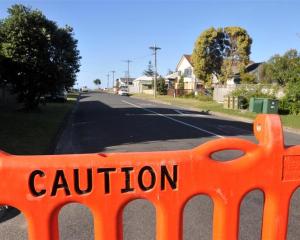"Lest we forget" is scrawled in red on a yellow ute abandoned on the roadside. Then the words: "Life goes on and on". That, it seems, is true in tsunami-stricken Samoa.
So far, there has been no time to grieve, and no time to mourn those lost, or still missing. Instead, there is work to do. So much work.
As day breaks, less than 24 hours after Wednesday's earthquake, the clean-up begins in the coastal area of southeast Upolu, which bore the brunt of the post-quake sea surge.
The village of Ulutogia has been destroyed.
Floating furniture laps in the tide, parts of the road have slipped away, power poles have been knocked to the ground.
Fales have been flattened and rubble is strewn everywhere.
Thick silt covers everything at least 100m from the shore, leaving a tell-tale sign of the water's destructive path.
The people of Ulutogia have lost everything, but they thank God no-one in the village died.
A short drive around the coast leads to Lalomanu.
On the most southeastern tip of the island, it was completely exposed: it did not stand a chance against the power of the ocean.
When we arrived in Samoa on the day of the tragedy, Lalomanu accounted for 58 of the then-confirmed 79 dead.
The body count was tipped to rise even higher yesterday, as teams of police scoured the popular tourist spot for buried victims, or those swept out to sea.
Sio Taufua (17) limps along the road to the remains of Taufua Fale, his family home which often hosted tourists, most recently a group of high school pupils from Palmerston North.
All that remains is a slab of concrete foundation.
Clad in camouflage fatigues, Sio rolls a cigarette and points out various household items that belong to his family.
A fridge here, a car there, the precious possessions are strewn over hundreds of metres.
Lalomanu is no longer a thriving tourist spot, well known to Kiwi travellers.
Now, it is a rubbish dump.
Its pristine white sands, normally scattered with sun-loungers and basking tourists, are strewn with personal effects and furniture.
Dozens of police fan out along the beach, using sticks to probe the detritus for bodies buried beneath.
"There is nothing here. It's gone. Nothing," Sio says.
He watched when the tsunami sucked the water from the shoreline, draining the channel dry, before spewing the sea on to the land.
He matter-of-factly describes scenes of chaos, of screaming tourists at the beach, and a brother who climbed a coconut tree to safety.
Then he adds that his grandfather is missing; that his younger brother and sister are dead; that he dragged a palagi tourist out of the water, only to find she had already drowned.
In the past 24 hours, Sio has seen a lot for a 17-year-old.
When offered condolences, he shrugs his shoulders and attempts to salvage something from the debris.
The desolation becomes desensitising further along the coast. Different village, same story.
And the same stoic smile and wave. Then the people figuratively roll up their sleeves and get back to work. One piece at a time. It's back-breaking, heart-breaking work.
Yet everywhere there are things that make you smile. The dairy in the middle of nowhere that sells ice-cold Coke, with just a hint of salty seawater.
As the death toll continues to rise, a doctor confides that despite outward appearances, her people will grieve for their lost ones.
Life will go on, but Samoa needs time.
"We just haven't had time to mourn. But we will," she says.
- Jared Savage of the NZ Herald.



